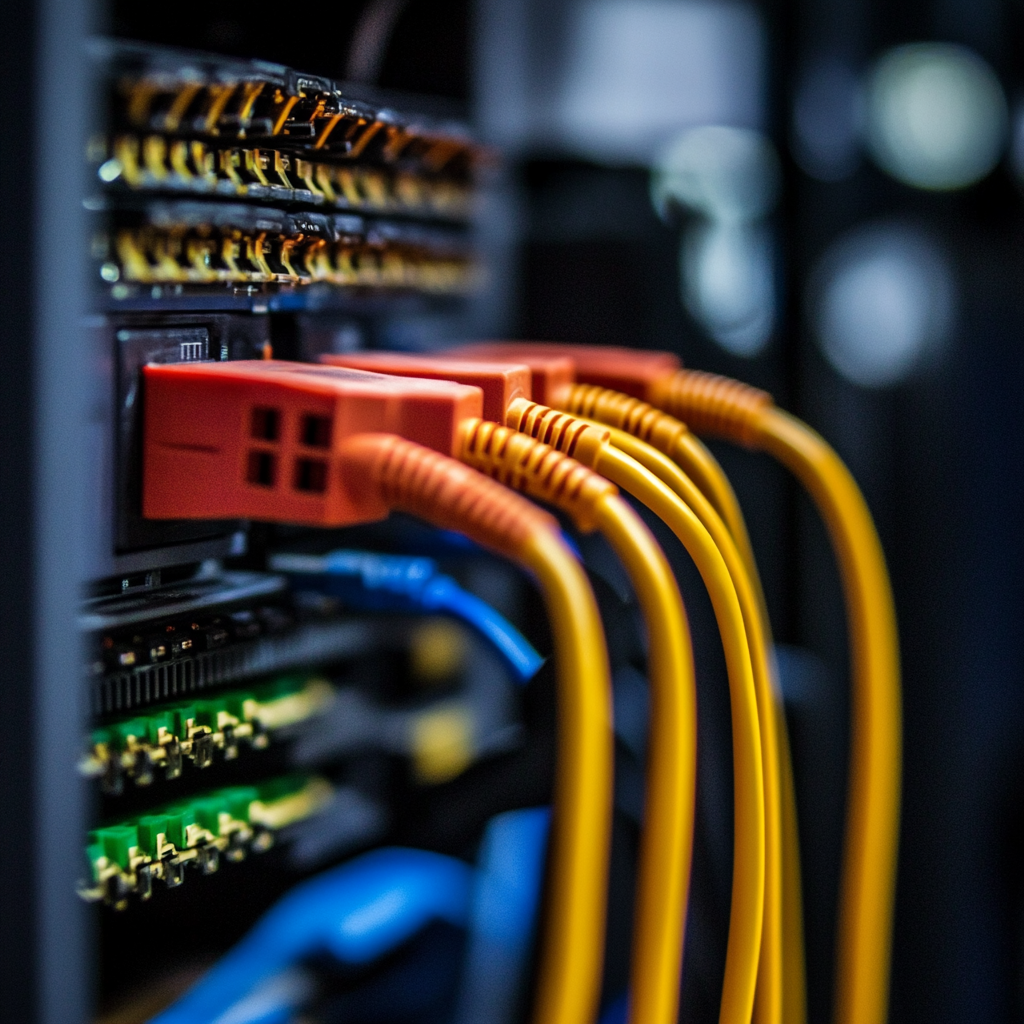Understanding DSL Technology and Why Your Cable Matters
Thu Aug 14 2025
|Internet ServicesLearn how to choose a DSL cable cord for optimal internet performance. Complete guide covering compatibility, cable types, length, quality factors, and installation tips.

DSL technology transforms your existing copper telephone lines into high-speed internet pathways, allowing simultaneous internet usage and phone calls on different frequency bands. Unlike traditional dial-up connections, DSL provides always-on connectivity that doesn’t tie up your phone line.
However, DSL signals are particularly sensitive to cable quality because they operate at higher frequencies. A suboptimal cable can lead to:
- Slower speeds than your ISP advertises
- Frequent disconnections and instability
- Buffering during streaming or video calls
- Poor signal-to-noise ratio affecting overall performance
Essential Factors When Choosing a DSL Cable Cord
1. Connector Compatibility: Getting the Right Fit
RJ11 Connectors are the most common for residential DSL connections. These small, modular connectors fit standard telephone jacks and typically use two or four internal wires. Most home DSL setups require RJ11 connectors.
RJ14 Connectors look nearly identical to RJ11 but feature six positions with four conductors (6P4C), supporting dual phone lines. Many cables labeled as “RJ11” are technically RJ14, which works perfectly for DSL and may offer better performance for higher-speed connections.
2. Cable Category and Speed Ratings
Cat5e (Enhanced Category 5) cables support speeds up to 1 Gbps with reduced crosstalk and are an excellent, cost-effective choice for most DSL connections. They provide sufficient bandwidth for typical home internet usage.
Cat6 cables offer even better performance, supporting higher speeds and increased bandwidth (up to 250 MHz compared to Cat5e’s 100 MHz). They’re ideal for future-proofing your setup and handling high-demand applications.
3. Cable Length
Measure Accurately: Calculate the exact distance between your DSL modem and the telephone wall jack, accounting for routing around furniture and obstacles.
Minimize Length: Signal degradation increases with cable length. Ideally, keep your DSL cable under 6 feet (2 meters) when connecting your modem to the wall jack.
Plan Your Route: Choose the most direct path while avoiding high-traffic areas where the cable could be damaged or unplugged.
4. Cable Quality and Construction Materials
Pure Copper Conductors are essential for optimal signal transmission. Avoid cables made with copper-clad aluminum (CCA), which offers inferior conductivity and is more prone to signal degradation over time.
24 AWG Wire Gauge is the standard thickness for DSL cables and provides the right balance of flexibility and signal integrity.
High-Quality Shielding protects against electromagnetic interference (EMI) and radio frequency interference (RFI) from other electronic devices, power lines, and wireless signals.
Advanced Considerations for DSL Cable Selection
Shielding Types and Their Benefits
Foil Shielding uses aluminum foil wrapped around wire pairs to block interference. This is effective for basic protection against EMI.
Braided Shielding employs a mesh of thin metal wires for enhanced protection. This type offers superior interference resistance, especially in electrically noisy environments.
Double or Triple Shielding combines multiple layers of protection for maximum signal integrity in challenging environments with high interference potential.
Environmental Factors
Consider your home’s electrical environment when learning how to choose a DSL cable cord:
- High-interference areas near microwaves, refrigerators, or dimmer switches require cables with superior shielding
- Older homes with questionable electrical wiring may benefit from premium shielded cables
- Multi-device households with numerous electronics need better interference protection
Installation Best Practices for Optimal Performance
Proper Connection Technique
- Inspect your new cable for any visible damage before installation
- Insert connectors firmly but gently into ports until they click securely
- Connect directly to the wall jack – never put a DSL filter on the modem’s line
- Use DSL filters on all other phone devices connected to the same line
Cable Routing Guidelines
Avoid Sharp Bends: Never bend cables sharply or create tight kinks that can damage internal conductors and shielding.
Maintain Distance from Interference: Keep DSL cables at least 6 inches away from power cords, large appliances, and other electronics.
Use Cable Management: Secure cables with clips or ties to prevent damage and maintain organization, but don’t over-tighten.
Test Your Connection: After installation, run speed tests to verify you’re receiving optimal performance.
Troubleshooting Common DSL Cable Issues
Understanding how to choose a DSL cable cord also involves recognizing when cable issues are affecting your connection.
Signal Degradation Symptoms
- Speeds significantly lower than your subscribed plan
- Intermittent disconnections (blinking DSL light on modem)
- Static or noise on connected landline phones
- Low Signal-to-Noise Ratio (SNR) readings in modem diagnostics
Quick Diagnostic Steps
- Check all connections for firmness and proper fit
- Test with the shortest possible cable to isolate length-related issues
- Temporarily remove all DSL filters from phones to test for filter problems
- Monitor modem diagnostic pages for SNR and signal strength readings
Brand Selection and Budget Considerations
When deciding how to choose a DSL cable cord, balance quality with cost-effectiveness:
Reputable manufacturers like Belkin, Monoprice, and AmazonBasics typically offer reliable products with good warranties and customer support.
Industry certifications such as TIA-568-C.2 compliance ensure cables meet professional standards for performance and durability.
Warranty coverage provides peace of mind and protection against defects or premature failure.
Cable Management
Proper cable management enhances both performance and home appearance:
Cable Clips and Ties: Use adhesive clips along baseboards and Velcro straps for bundling, but avoid over-tightening.
Raceways and Conduits: Install paintable cable raceways in visible areas for a professional, finished look.
Under-Carpet Routing: Use flat cables designed for under-carpet installation, ensuring they won’t be damaged by foot traffic.
Common Mistakes to Avoid
Using Ethernet cables for DSL connections: This is incorrect and won’t provide optimal performance.
Ignoring shielding requirements: Unshielded cables in high-interference environments lead to poor performance.
Choosing excessive length: Longer cables increase signal loss and potential interference.
Forgetting DSL filters: All phones and fax machines need filters, but never put one on the modem line.
Poor cable routing: Running cables parallel to power lines or near appliances introduces interference.
Conclusion
Learning how to choose a DSL cable cord is an investment in your internet experience that pays dividends in improved speed, reliability, and overall satisfaction. The key factors – proper connector compatibility, appropriate cable category, optimal length, quality construction materials, and effective shielding – work together to ensure your DSL connection performs at its best.
Check us out at internetservices.com today and find out which internet is best for you.



